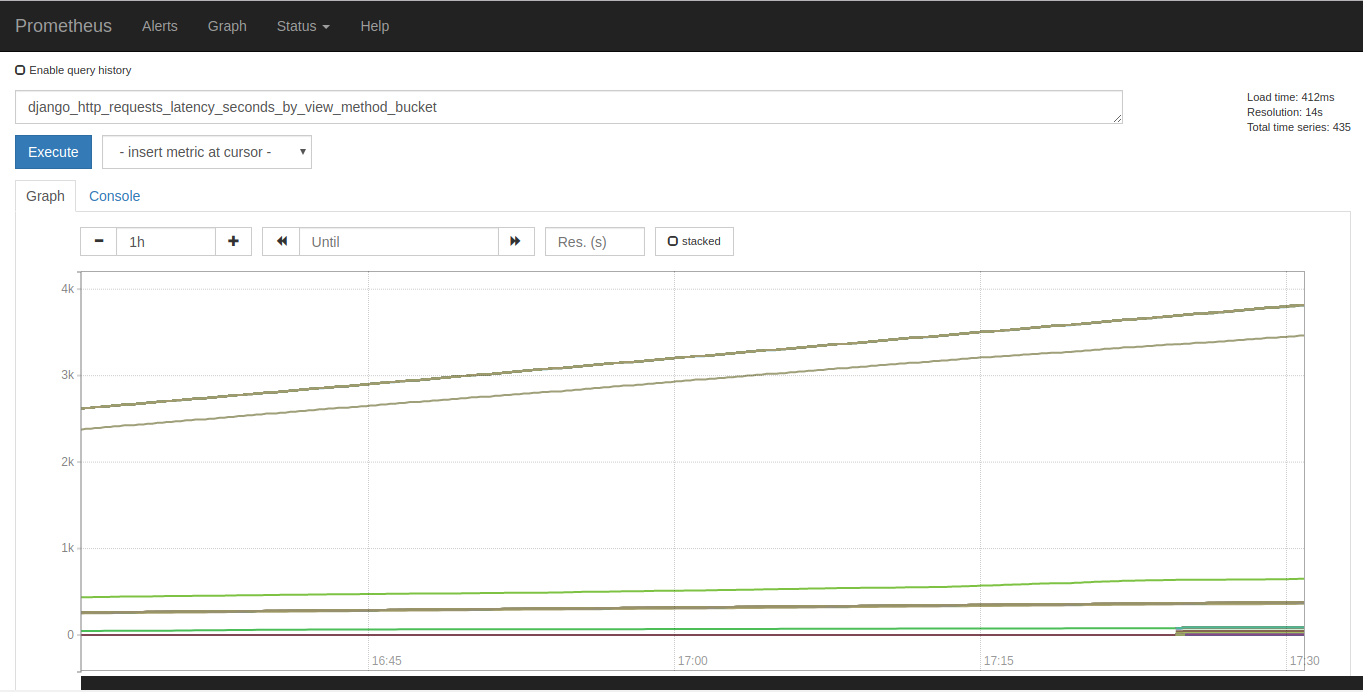Hue is getting easy to run with its Docker container and Kubernetes Helm package. Hue metrics are useful for checking the load (how many users), slowness (average or percentile times taken by requests)… Those have been available via the /metrics page, but here is how to collect and aggregate this information in Kubernetes.
Prometheus is the metric collecting system heavily used in the Kubernetes world. Here we will leverage the Microk8s distribution that bundles it.
First we install the Prometheus operator via the add-on:
microk8s.enable prometheus
And see that the Prometheus operator is running, which powers the Prometheus pods in the monitoring namespace:
kubectl get pods -n monitoring
NAME READY STATUS RESTARTS AGE
alertmanager-main-0 2/2 Running 268 48d
grafana-7789c44cc7-7c4pb 1/1 Running 125 48d
kube-state-metrics-78c549dd89-kwmwg 4/4 Running 512 48d
node-exporter-zlg4s 2/2 Running 259 48d
prometheus-adapter-644b448b48-7t8rt 1/1 Running 131 48d
prometheus-k8s-0 3/3 Running 364 47d
prometheus-operator-7695b59fb8-k2qm2 1/1 Running 130 48d
To tell Prometheus how to get the metrics, we use a ServiceMonitor. Those metrics are available on the /metrics page of Hue via the Django Prometheus module.
Note that to expose this URL, Hue needs to have this property turned on:
[desktop]
enable_prometheus=true
Then we can check that Prometheus is scraping properly Hue: http://gethue:9090/targets
And charting them in the Graph tab:



